Although the offshore sailing season is drawing to an end; it is never too early to look to your 2020 sailing season. Offshore racing, both crewed and shorthanded, is one of the biggest growth areas of sailing domestically and internationally.
UK Sailmaker's Yannick Lemonnier is one of the most experienced offshore racers in the country. With over 10 years of experience and more than 80,000 miles under his belt, mostly solo and double-handed, he is full of offshore sailing knowledge. Here gives us some top tips to bring into your 2020 offshore sailing season.
The Mainsail
The main is the one sail that we always have up, no matter the point of sail. Trimming and managing it is crucial to success – so how can you make life a bit easier?
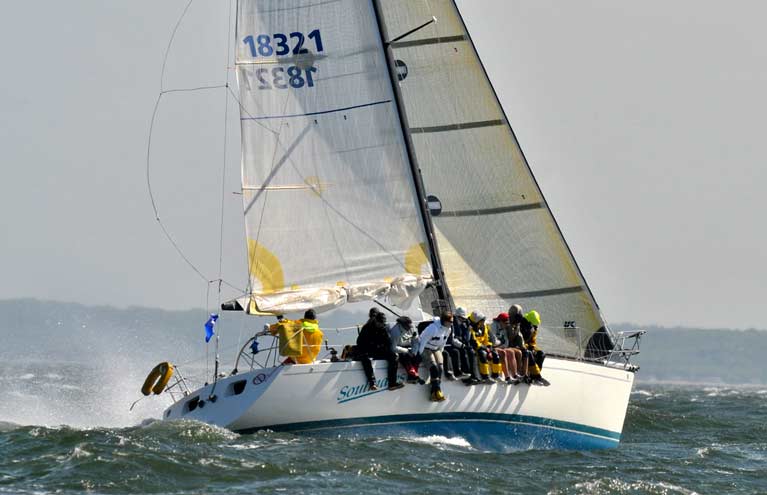 A reefed mainsail
A reefed mainsail
- Stitch all your battens. This is as simple as using a hand sewing needle to put a quick stitch at the extremity of each batten pocket. This fully secures your battens no matter what weather you encounter. The consequences of losing battens can be dramatic for the integrity of the sail and its performance.
- Reefing. Tie the bottom part of your mainsail with small diameter bungee and plastic clips instead of solid rope. Releasing your reef with one tie remaining can seriously damage your sail – and can easily happen when tired or on a dark night.
- Glow-in-the-dark draft stripes. These make trimming your sails at night so easy. Each stripe should be marked at the 50% chord length to give a good shape reference. These stripes can be retrofitted to older sails (depending on their age).
- Reef assistant. This is a great option for regular offshore racers. Basically it is an additional pennant set just above your reefing eye at the luff end of your mainsail. It gives you a solid anchor to either pull your reef towards its hook or release pressure to unhook the reef in strong winds.
- Tie up the sail, not the boom! This is one we see a lot. When lashing up your reefed sail to not tie it around the boom. Instead, lash it around itself. You should have a tie going from the leeward side, around the loose sail between itself and the boom, and tied securely on the windward side with an easy to release knot.
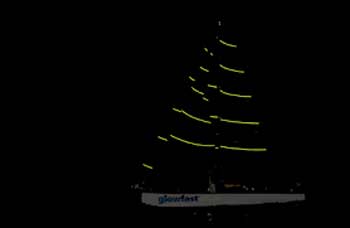 Glow in the dark sails
Glow in the dark sails
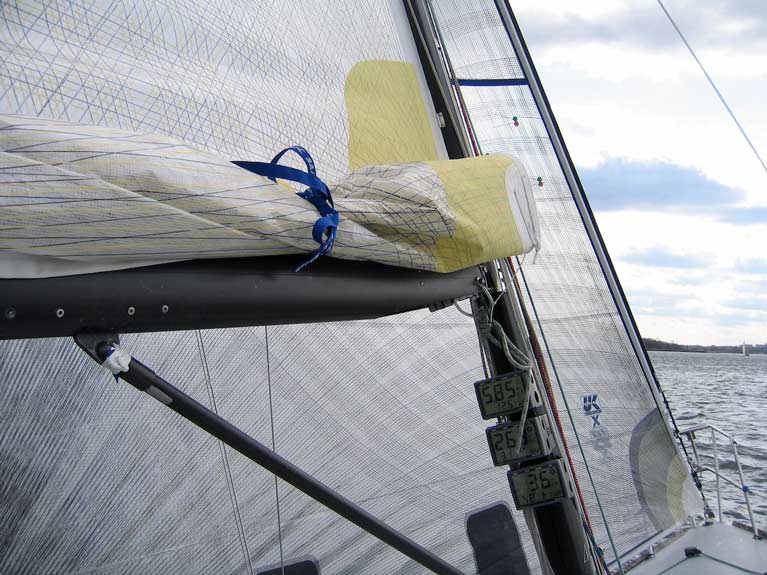 A reefed mainsail tied
A reefed mainsail tied
Headsails
When sailing upwind or tight reaching, depending on your inventory, you will be using your headsails – quite likely multiple headsails. Keeping on top of them and practising crew manoeuvres with them is critical to a successful offshore race.
- Stitch all your battens. This is the same as with your mainsail – but even more so as your headsails are more exposed to flapping as they are hoisted and dropped. Securing the battens is essential. This is a really quick and basic job which can prevent a lot of trouble down the line.
- Peels and tack peels. This manoeuvre is a must – and it is not complicated with proper training and the correct setup. Having a second attachment either side of the tack attachment point is recommended. And make sure to keep a close eye on your halyard to ensure no wraps occur. I would recommend to always drop the sail on the inside as dropping outside is risky and can lead to you losing your sail!
- Glow-in-the-dark draft stripes. As with the mainsail, these make setting halyard tension, car positions, sheet tension etc much more efficient at night. Glow tell tails on the luff make steering and trimming a doddle on those dark nights.
- Spare sheet and block. This is to clip onto the outside rail, or purpose installed padeye, to outhaul the headsail on a reach. This is essential. Every time your clew moves up and down you are losing power. A well-positioned outboard lead padeye and the hardware to go with it makes a huge difference to off the breeze speed.
- Know your inventory. Knowing your sails is critical regarding wind range and angles. Where is your limit between J2 and J3? Between an outhauled genoa and code zero? The only answer is practice and recording. Experiment with different setups and take note of what works, and more importantly, what doesn’t!
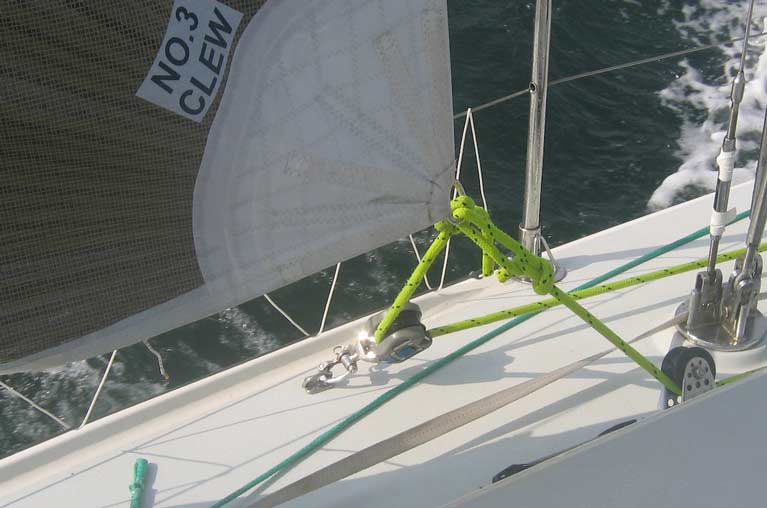 Outboard lead
Outboard lead
Spinnakers
We all love sailing downwind when offshore. It can be fast and fun. It can certainly be a lot more comfortable than beating into a gale! But it brings its own challenges.
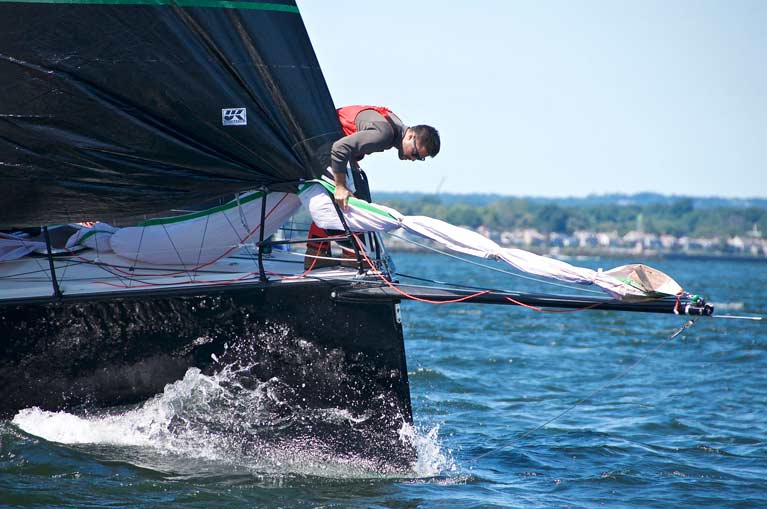 Spinnaker stops on sail tack
Spinnaker stops on sail tack
- Choose your colour carefully. White spinnakers are difficult to trim at night. They are like a ghost. I would recommend a dark colour to get more contrast – I also find white harder on your eyes in bright sunshine.
- Velcro for control. Heavy spinnakers should be equipped with Velcro banding to keep them deflated while hoisting. They allow you to hoist the sail and stabilize the boat, then pop the sail out when everything is ready.
- Repair early. Gets lots of 100mm insignia tape (stick-back dacron) to fix small tears that can become a bigger problem. This tape can also fix other sails along with a bottle of acetone (nail varnish remover) to remove salt and dry the sail surface.
- Inspect for chafe. Don’t worry, we’re talking about your halyards! If on a long spinnaker run chafe can become a real issue. Covers can wear on sheaves or deflectors overnight. Ease the halyard a foot and check with the binoculars for visible signs of damage. If you can see it with binoculars it will be a bigger problem sooner rather than later.
- Peeling practice. Peeling spinnakers is actually easier than peeling headsails. The most crucial element is good halyard management. Have a spare peeling sheet, with snap shackle, ready and accessible. Think and talk the manoeuvre through – and, as always, practice!
Storm Sails
Whether we like to admit it or not, there is a tendency to see storm sails as a box-ticking exercise. Not many sailors have a clue how to rig them, never mind use them properly!
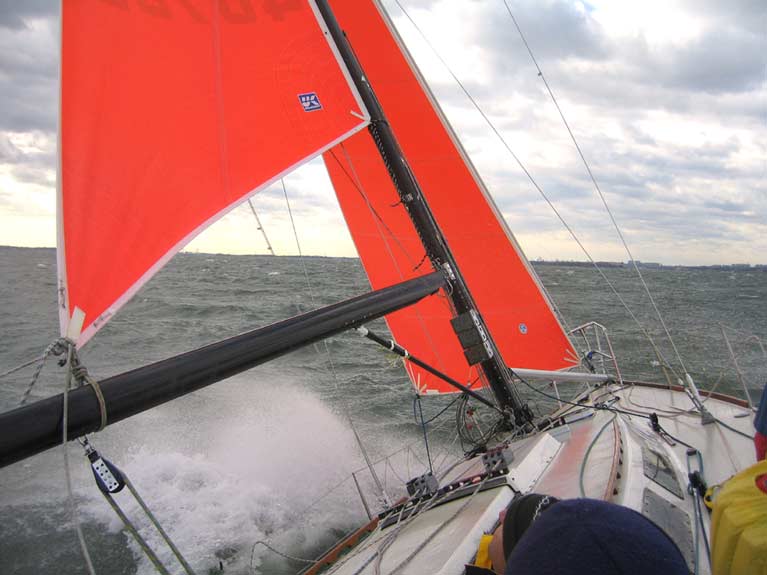 Storm sails
Storm sails
- Firstly they should be stored in a separate dry bag. Piston hanks tend to corrode in an offshore environment unless used regularly – they should be replaced with soft shackles.
- The storm jib should have a tack strop of a set length. This should position the sail at a height that lines the clew up nicely with your jib car position.
- The trysail should ideally be on a separate track. It should be rigged with spinnaker sheets lead inside the guard rails – as we discovered after training in just under 50 knots!
Summary
A huge part of offshore racing is managing your energy. By making the boat as easy to sail as possible, and removing any potential issues before they occur, you can put 100% of your energy into making the boat go fast. Plan, practice, and enjoy your offshore adventures



























































